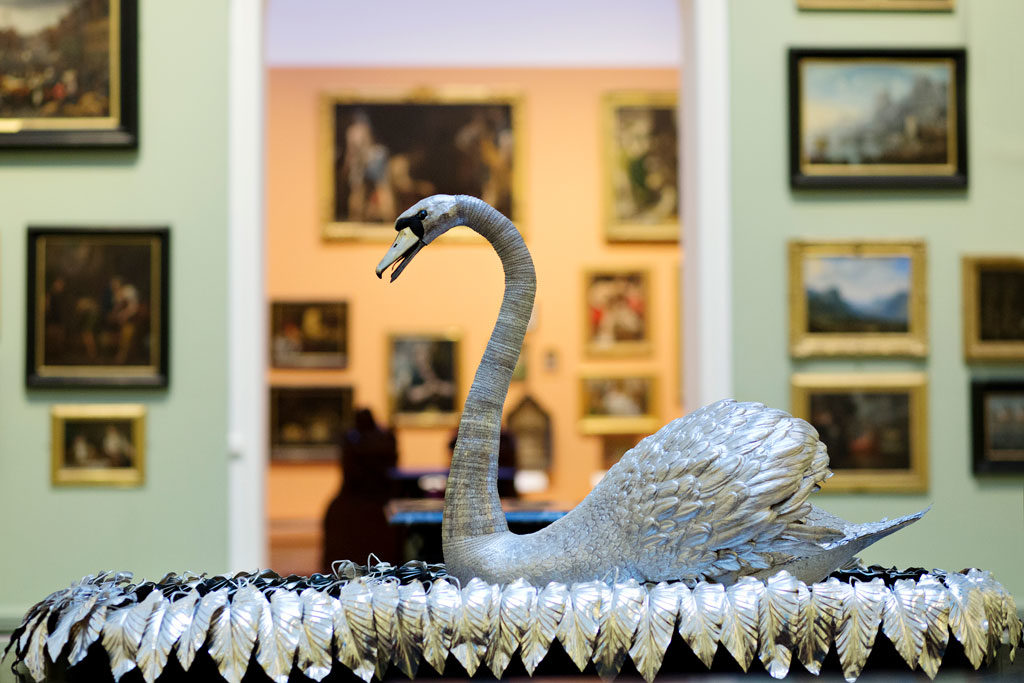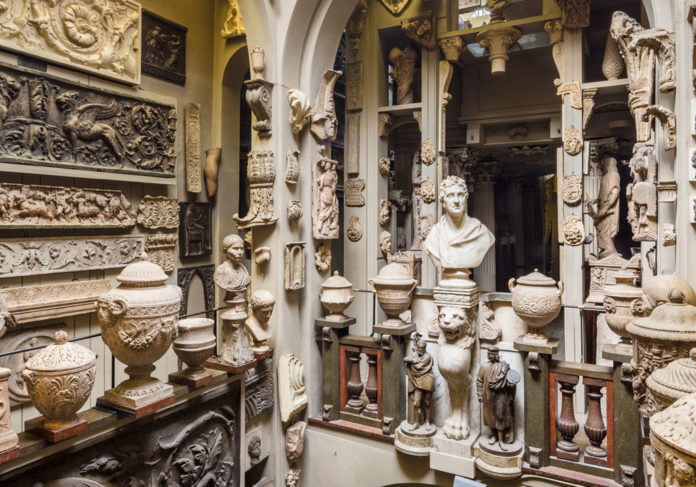Felicity Day examines the legacy of eight prolific patrons of the arts, from art-loving royals to private collectors of curios.
Many of Britain’s finest museums owe their existence to the magpie instincts of a private collector or two, and their generous desire to share the fruits of their labours with the nation. Though the collectors themselves are long gone, their personal treasure troves give us a glimpse into their lives and loves, personal tastes and inspirations. Here we’ve gathered seven of our country’s great collectors, whose collections can still be visited today.
Sir John Soane
Architect Sir John Soane, designer of the Bank of England, rose from humble beginnings as the son of a bricklayer. His famous collection of art and antiquities started with his Grand Tour of Europe in 1778, funded by a scholarship from the Royal Academy. It was fuelled in later years by his desire to assemble pieces that would inspire and encourage students of architecture.
Soane gathered architectural models and fragments (some from sites on which he worked); antiquities such as his famed Egyptian Sarcophagus; classical sculptures; and paintings by artists such as Hogarth, Canaletto and Turner. The collection became so large that he bought and re-built three neighbouring properties in London’s Lincoln’s Inn Fields to display it all.
His presentation was deliberately eclectic; pieces were squeezed into every nook and cranny and objects creatively juxtaposed. Visitors can still experience it as Soane intended, thanks to his express instruction that both house and collection be preserved as they were on his death in 1837.
King George IV
He may have been voted our “most useless” monarch in an English Heritage poll, but King George IV is arguably Britain’s greatest royal collector. A connoisseur of the arts, he purchased some of the Royal Collection’s finest Old Masters. He also commissioned works from the most talented artists of his day, notably Sir Thomas Lawrence, who created the spectacular series of portraits in the Waterloo Chamber at Windsor Castle.
George was also a zealous collector of French furniture and decorative art. He gave the Royal Collection its unparalleled selection of Sèvres porcelain, including an entire service commissioned by Louis XVI. His fascination with Napoleon
is responsible for some of the Collection’s more intriguing objects, like the Emperor’s cloak and travelling cutlery.
It’s George’s abundant treasures that fill the state rooms at Buckingham Palace and Windsor Castle. They’ve provided the backdrop to countless royal and state occasions, and this year, he is being honoured with a dedicated exhibition at the Queen’s Gallery, Buckingham Palace, exploring his unrivalled collection.
John and Joséphine Bowes

The story of the Bowes’ magnificent collection starts in Paris in 1847. There, John, the illegitimate son of the 10th Earl of Strathmore, purchased a theatre and fell head-over-heels in love with one of the actresses, Joséphine. Both were passionate art-lovers, and with plenty of money at their disposal, they embarked on an ambitious philanthropic project: to create a world-class museum that would bring art and culture into the lives of the people of John’s native County Durham.
In little more than 12 years they gathered 15,000 objects: porcelain, glassware and tapestries; a large group of Spanish artworks, including notable pieces by El Greco and Goya; and a famous silver swan automaton, a rare survival from the 1700s. To house them all, they designed a magnificent French-style château, as breathtakingly beautiful as the objects within.
For more on the greatest patrons of the arts, read the full article in BRITAIN Volume 87 Issue 6, on sale here.






 © 2024
© 2024